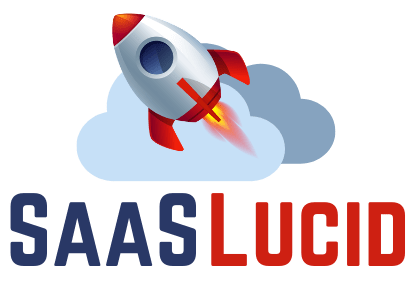No, Bubble.io does not allow users to export the underlying code of their applications. The platform retains ownership of the code and its interpretation engine has limitations that prevent code export. While you can export data in CSV/Excel formats and through API, translating Bubble.io apps into traditional coding languages is technically challenging. This limitation impacts business growth, customer retention, and investor perception. Bubble.io's architecture supports extensibility and scalability but exporting high-fidelity, functional code remains unfeasible due to rapid technological changes and complex integration dependencies. To understand the implications fully, let's examine the detailed aspects.
Contents
Key Takeaways
- Bubble.io does not allow users to export the actual code of their applications.
- The platform retains ownership of the underlying code, restricting direct code export.
- Exporting high-fidelity, functional code from Bubble.io remains highly limited.
- Architectural complexity and dynamic execution hinder straightforward code conversion.
- Users can export data in CSV/Excel format and through APIs but not the application code.
Intellectual Property Ownership
Intellectual property ownership within Bubble.io delineates that while users own the design of their apps, Bubble retains ownership of the underlying code. This clear distinction guarantees that users maintain design ownership, including the visual and functional aspects of their application.
However, the software ownership, specifically the proprietary code that powers the app, remains under Bubble's control.
This ownership agreement is akin to how Microsoft owns the software but not the user documents created with it. Similarly, while users can freely manipulate and design their Bubble applications, they do not possess the rights to the actual code, thereby limiting their ability to export code.
User data ownership is another critical facet governed by the agreement with Bubble. Users retain control over their data, which includes any user documents and data ownership associated with their applications.
This bifurcation between code ownership and data ownership guarantees that while Bubble safeguards its intellectual property, users' data remains their own.
Understanding these distinctions is essential for anyone seeking to master Bubble's platform, as it delineates the boundaries of what users can control versus what Bubble retains proprietary rights over.
Data Export Options
Leveraging its versatile platform, Bubble.io offers multiple data export options to facilitate seamless data extraction and manipulation for users. While the platform does not support direct code export or providing the source code for exporting your application, it excels in enabling users to export data efficiently, maintaining data integrity and usability.
The primary data export options available on Bubble.io include:
- CSV/Excel Format: Users can easily export data in CSV or Excel format, making it easy to access and manipulate data externally.
- API for Programmatic Data Extraction: Bubble.io introduces an API that allows for programmatic data extraction, offering greater flexibility and control over the exported data.
- Transparent Processes: The platform ensures clear and transparent data export processes, supported by detailed API documentation to assist users in seamless data extraction.
- Image and Text Data Export: Bubble.io provides clarity on exporting images along with text data, ensuring thorough data exports that maintain the integrity and completeness of your application data.
While exporting your application or the source code, including Javascript, from Bubble Apps Source would be downright impossible due to platform constraints, these robust data export options guarantee that users can still manage and manipulate their application data effectively.
Technical Feasibility
The technical feasibility of exporting code from Bubble.io is greatly hindered by its interpretation-based architecture, which differs from traditional code-based platforms. This architectural distinction introduces substantial challenges in converting Bubble applications into conventional code.
Additionally, rapid advancements in technology may further complicate efforts to maintain compatibility and functionality of the exported code.
Interpretation Engine Limitations
Exporting code from Bubble.io is inherently challenging due to its architecture as an interpretation engine. This unique structure results in several technical limitations when attempting to convert Bubble applications to traditional code. The interpretation engine processes commands at runtime, which complicates the direct extraction of backend functionality into static code formats.
The primary challenges in exporting from Bubble.io can be summarized as follows:
- Architecture Complexity: Bubble.io's interpretation engine is designed to handle dynamic tasks that traditional code frameworks do not readily support, making direct conversion arduous.
- Backend Functionality: Bubble's backend processes and workflows are deeply integrated into its interpretation engine, posing significant hurdles in isolating and translating these components into traditional code.
- Dynamic Nature: The real-time execution and interpretation of commands means that exported code would lack the flexibility and dynamism inherent in Bubble's environment.
- Technical Feasibility: Given the rapid advancements in technology, the feasibility of exporting high-fidelity, functional code from Bubble remains limited, requiring ongoing product improvements to address these challenges.
Thus, while Bubble.io continues to innovate, the fundamental limitations imposed by its interpretation engine architecture present significant technical challenges for exporting traditional code.
Conversion Challenges
Addressing the technical feasibility of converting Bubble.io applications into traditional code formats involves overcoming significant architectural and dynamic execution challenges. Bubble's architecture, as an interpretation engine, presents inherent limitations when attempting to export apps into standalone code. The interpretation engine dynamically executes app logic, making direct translation into static code formats complex and technically demanding.
One of the primary limitations stems from Bubble's unique architecture, which does not align seamlessly with conventional coding paradigms. As an interpretation engine, it dynamically processes and executes application logic, which complicates the direct export of underlying functionalities. This dynamic nature requires a sophisticated approach to reinterpret and restructure the app's logic into traditional code, which is often infeasible without substantial product improvements.
Furthermore, the differentiation of Bubble as an interpretation engine means that translating its app logic into traditional code formats involves resolving numerous technical challenges. These include ensuring the exported code maintains the same functional integrity and performance as the original app. The feasibility of achieving this is currently limited by the existing technological constraints intrinsic to Bubble's architecture.
Rapid Tech Advancements
Rapid technological advancements continually reshape the landscape of software development, directly influencing the technical feasibility of exporting Bubble.io applications into traditional code formats. Bubble.io, known for its unique architecture as an interpretation engine, faces inherent technical feasibility issues in this regard. The platform's design limitations and interpretation engine challenges necessitate ongoing product improvements to address these export challenges.
The rapid pace of tech advancements poses significant future code compatibility issues, making it difficult for exported code to stay relevant and functional with emerging technologies. Here are some key factors to ponder:
- Platform's Design Limitations: Bubble's differentiation as an interpretation engine introduces complexities in converting its applications to traditional code.
- Interpretation Engine Challenges: The unique nature of Bubble's interpretation engine complicates the creation of a seamless export process.
- Future Code Compatibility: Rapid tech advancements necessitate continuous updates to ensure that exported code remains compatible with future technologies.
- Innovative Solutions: Addressing export challenges will require innovative solutions that can bridge the gap between Bubble's architecture and traditional code structures.
Customer Perspectives
From the vantage point of customers, the ability to export code is a key factor influencing their choice of no-code platforms. Customer perspectives reveal a strong preference for owning source code, which is viewed as vital for both controlling their digital assets and ensuring long-term flexibility.
The demand for code export capabilities is driven by several factors: it attracts educated enterprise customers, enhances investor perception, and provides a competitive advantage in a crowded market.
Agencies have noted that limitations in code export result in lost opportunities, as clients often prioritize platforms that offer this feature. The ability to export code is not simply a technical preference but a strategic necessity, aligning with client preferences and broader market demand.
Businesses see owning and controlling source code as necessary for mitigating risks and seizing business growth potential.
Moreover, code export capabilities can greatly influence a company's ability to attract investors. Investors are more inclined to support ventures that demonstrate control over their technological infrastructure.
Essentially, the ability to export code not only fulfills immediate client needs but also sets the stage for sustainable business growth and success in a competitive environment.
Business Growth
Code export functionality is a vital feature that can greatly drive business growth for companies utilizing the Bubble.io platform. This capability offers numerous advantages that can expand a company's reach and solidify its market position.
Increased Customer Base: The option to export code can attract a more technically savvy customer base, including enterprise clientele, who demand control over their source code for customization and compliance needs.
Enhanced Customer Retention: Offering code export acts as an insurance policy for business continuity, reassuring customers that their investments are secure, thereby improving customer retention.
Positive Investor Perception: The ability to export code can enhance investor perception and valuation, as it demonstrates a commitment to flexibility, scalability, and future development.
Future Development and Scalability: Code export allows businesses to scale more effectively and plan for future development without being locked into a single platform, facilitating long-term business growth.
Providing code export functionality also offers companies the essential benefit of source code control, enabling them to adapt their applications as required. This flexibility is integral for maintaining a competitive edge and responding promptly to market changes. Therefore, code export is a strategic advantage for businesses leveraging the Bubble.io platform.
Bubble's Architecture
Understanding Bubble's architecture is fundamental to appreciating how the platform supports scalability, flexibility, and robust app development. Built on a robust JavaScript foundation, Bubble.io architecture offers extensibility through code and APIs, allowing developers to customize and extend their applications seamlessly. This architecture is designed to meet market demands and user needs efficiently.
Bubble's unique backend functionality guarantees flexibility and growth potential, making it an ideal platform for both small and large-scale applications. One of its standout features is the scalability without hard limit, enabling applications to expand as required without performance degradation. For enterprises, the dedicated cluster for app scalability ensures that their applications can scale independently from other Bubble applications, providing a tailored solution for high-demand environments.
Moreover, Bubble's architecture is engineered to adapt to various coding and integration requirements, facilitating the incorporation of third-party APIs and custom code. This adaptability assures that developers can meet specific user needs, thereby enhancing the overall functionality and user experience of their applications.
Frequently Asked Questions
Can You Export Data From Bubble?
Yes, Bubble.io allows users to export data in CSV format for easy access and manipulation. Additionally, users can utilize Bubble's API to craft scripts for programmatic data extraction, facilitating efficient data management and integration with other systems.
Can I Download a Bubble Code?
Downloading code from Bubble.io is not possible. The platform emphasizes a visual development environment. While users can export app data in CSV format, switching off requires rebuilding app logic in another environment. Design elements may be exportable.
Does Bubble Provide Source Code?
Bubble does not provide direct access to the source code of applications built on its platform. Users can export design elements, but the underlying code logic remains inaccessible. However, Bubble has committed to open-sourcing the code if it ceases operations.
Is Bubble the Best No-Code Builder?
While Bubble.io is a robust no-code builder offering extensive visual development tools, its lack of code export functionality may limit its appeal for users requiring deeper customization and portability. Evaluating needs is essential before declaring it the best.

